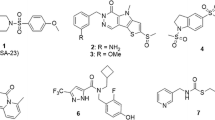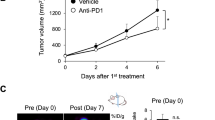Abstract
As previously shown, deregulated cell cycle progression is a hallmark of cancer. Accordingly, the majority of therapeutic drugs has been designed to inhibit cell proliferation and/or to induce apoptosis. Metabolic imaging with PET and the glucose analog 2′-[18 F]fluoro-2′-deoxyglucose (FDG) has been demonstrated to sensitively detect malignant tumors and to identify responding tumors early in the course of anticancer treatment. [18 F]FDG PET is also a valuable clinical tool for predicting tumor response to therapy and patient survival.
Access this chapter
Tax calculation will be finalised at checkout
Purchases are for personal use only
Similar content being viewed by others
Author information
Authors and Affiliations
Editor information
Editors and Affiliations
Rights and permissions
Copyright information
© 2010 Springer-Verlag Berlin Heidelberg
About this chapter
Cite this chapter
Herrmann, K., Buck, A. (2010). Thymidine PET-CT. In: Fanti, S., Farsad, M., Mansi, L. (eds) PET-CT Beyond FDG A Quick Guide to Image Interpretation. Springer, Berlin, Heidelberg. https://doi.org/10.1007/978-3-540-93909-2_9
Download citation
DOI: https://doi.org/10.1007/978-3-540-93909-2_9
Publisher Name: Springer, Berlin, Heidelberg
Print ISBN: 978-3-540-93908-5
Online ISBN: 978-3-540-93909-2
eBook Packages: MedicineMedicine (R0)




